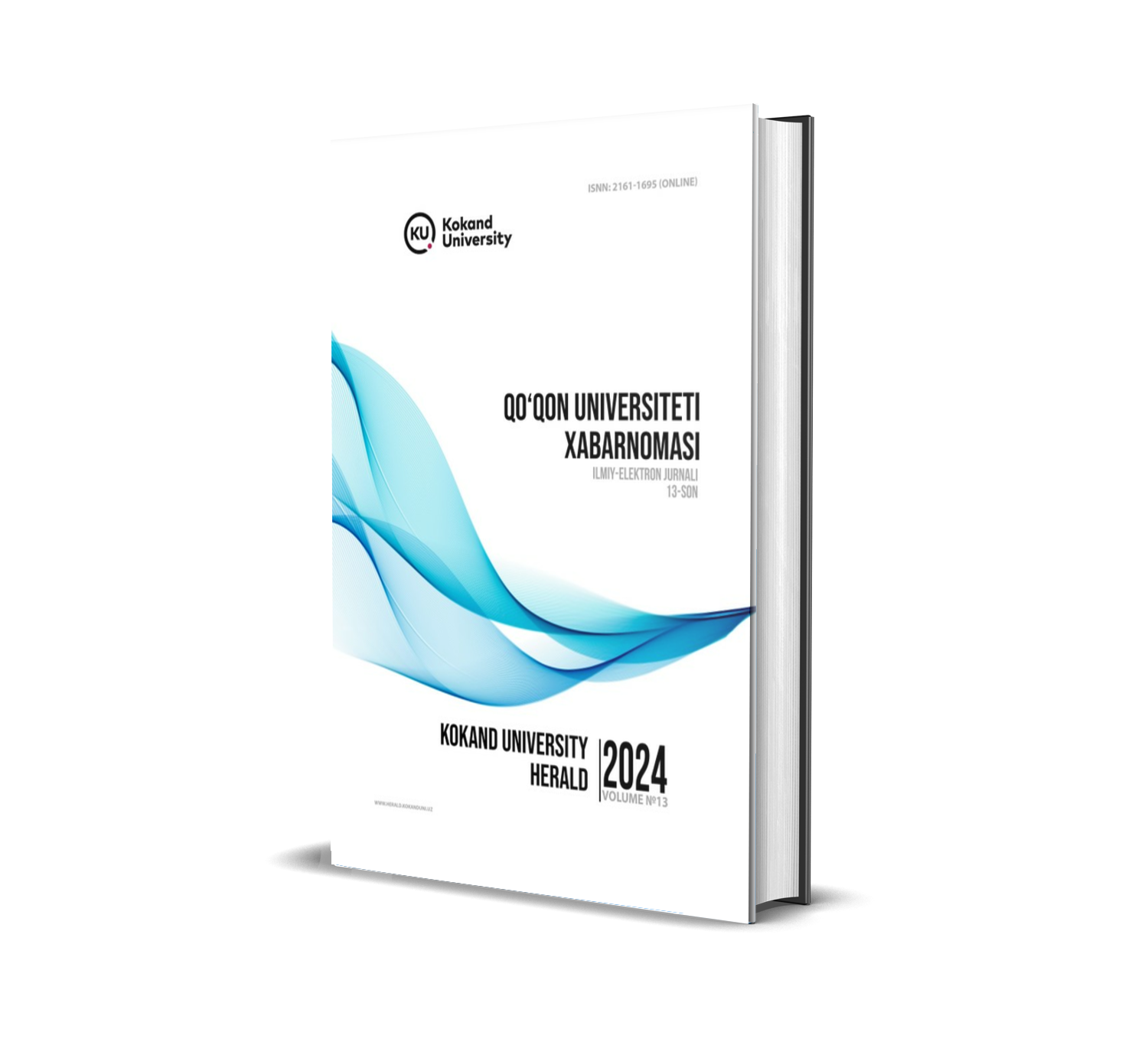COMMUNICATIVE METHODS OF TEACHING ENGLISH VOCABULARY AND GRAMMAR IN CONTEXT
DOI:
https://doi.org/10.54613/ku.v13i.1090Keywords:
communicative language teaching (CLT), contextual learning, vocabulary acquisition, grammar instruction, task-based learning (TBL), interactive activities, authentic materials, language immersion, language proficiency, form-focused instruction, communicative competence, meaning-focused instruction.Abstract
This paper examines the applicability of communicative approach in teaching of English vocabulary and grammar in context. Stemming from the communicative approach to language teaching that focuses on interaction and meaningful use of language, the paper explores how vocabulary and grammar learning can be contextualized in meaningful context and usage. Scholars criticized the conventional method of language teaching which involves memorization and repetitiveness of grammatical exercises, instead, there is a call for integrating effective practice in which students use language in real communicative practices. The paper used classroom practices and teacher-student interactions to reveal methods for the teaching of vocabulary and grammar, including task-based learning, content-based instruction, and authentic materials. Furthermore, the psychological perspectives of languages learning are provided in order to explain how these communication approaches meet the cognitive and social concerns of learners. Research data is used to back up the assertion that integrating new vocabulary and grammar promotes the effective acquisition, recall and application of linguistic items, while increasing the motivation of second or foreign language learners. Lastly, the paper offers a range of recommendations for the teachers, who are willing to use communicative methods in their classroom, and emphasizes flexibility and individual focus on students as the most crucial aspects of the constantly developing field of foreign language learning.
Foydalanilgan adabiyotlar:
Alyousef, H. S.. Exploring the impact of systemic functional linguistics on ESL students' reading comprehension skills. Journal of Language Teaching and Research, 10, 599-610.
Axmadjonova Mohinur. (2024). PROJECT-BASED LEARNING AS A CREATIVE AND INNOVATIVE WAY OF TEACHING ENGLISH AS A FOREIGN LANGUAGE. Kokand University Research Base, 54–60. Retrieved from https://scholar.kokanduni.uz/index.php/rb/article/view/287
Axmedov Ikboljon Ilxomovich. (2024). AN ANALYTICAL APPROACH TO VOCABULARY ENHANCEMENT STRATEGIES IN EFL CONTEXTS. Kokand University Research Base, 61–66. Retrieved from https://scholar.kokanduni.uz/index.php/rb/article/view/290
Axmedov Ikboljon. (2024). Exploring Cultural Wisdom and Communication Dynamics: A Comparative Analysis of English and Uzbek Proverbs within the Framework of Paremiology and Discourse Analysis. International Journal of Formal Education, 3(6), 301–308. Retrieved from https://journals.academiczone.net/index.php/ijfe/article/view/3109
Axmedov Ikboljon. (2024). STRATEGIES FOR VOCABULARY ENHANCEMENT IN EFL CONTEXTS: AN ANALYTICAL APPROACH. Multidisciplinary Journal of Science and Technology, 4(6), 571–573. Retrieved from https://mjstjournal.com/index.php/mjst/article/view/1676
Bakri, S.. Enhancing ESL writing through rhetorical strategy instruction: A case study. Journal of English Language Pedagogy, 8, 125-143.
Canale, M., & Swain, M. (1980). Theoretical bases of communicative approaches to second language teaching and testing. "Applied Linguistics", 1(1), 1-47.
Ellis, R. (2003). "Task-based Language Learning and Teaching". Oxford University Press.
Elvina Sherefetdinova (2024). INNOVATIVE APPROACHES IN TEACHING PHILOLOGICAL SCIENCES. Talqin va tadqiqotlar ilmiy-uslubiy jurnali, 2 (56), 104-108.
Fotos, S. (1998). Shifting the focus from forms to form in the EFL classroom. "ELT Journal", 52(4), 301-307.
Greculescu, A., Popescu, F., & Ivan, M.. The role of information resources in enhancing technical language performance. International Journal of Educational Technology, 5, 210-225.
Haydarova, Charos Jahongirovna (2021). WRITING TECHNIQUES. Oriental renaissance: Innovative, educational, natural and social sciences, 1 (4), 1491-1494.
Hymes, D. (1972). On communicative competence. In J. B. Pride & J. Holmes (Eds.), "Sociolinguistics". Penguin.
Karimova, O. (2024). The benefits and drawbacks of using artificial intelligence (ChatGPT) in education. New approaches in education – a step towards innovation, 8, 805-808.
Karimova, O. (2024). Linguopragmatic study of phraseological units with a somatic component in english and uzbek languages. Actual Problems of Humanities and Social Sciences, 4(9), 327-338.
Larsen-Freeman, D. (2001). Teaching grammar. In M. Celce-Murcia (Ed.), "Teaching English as a Second or Foreign Language" (3rd ed.). Heinle & Heinle.
Long, M. H. (1991). Focus on form: A design feature in language teaching methodology. In K. de Bot, R. B. Ginsberg, & C. Kramsch (Eds.), "Foreign Language Research in Cross-Cultural Perspective" (pp. 39-52). John Benjamins.
Mamurova Shakhlo Sultanovna THE ROLE OF IMAGERY IN LINGUISTIC EXPRESSION: COGNITIVE AND CULTURAL PERSPECTIVES // Talqin va tadqiqotlar ilmiy-uslubiy jurnali. 2024. №56. URL: https://cyberleninka.ru/article/n/the-role-of-imagery-in-linguistic-expression-cognitive-and-cultural-perspectives
Nation, I. S. P. (2001). "Learning Vocabulary in Another Language". Cambridge University Press.
Nunan, D. (1999). "Second Language Teaching & Learning". Heinle & Heinle.
Odilbek ogli, M. B. (2022). PASSIVE VOICE IN TRANSLATION. Web of Scientist: International Scientific Research Journal, 3 (6), 1605–1608.
kizi Mukhtorova, M. M., & Djumabayeva, J. S. (2022, August). WAYS OF EXPRESSING REPROACH DEPENDING ON THE TYPE OF THE SENTENCE IN THE ENGLISH LANGUAGE. In INTERNATIONAL CONFERENCES (Vol. 1, No. 15, pp. 122-126).
Rajabaliyeva, N. (2023). COMPARATIVE ANALYSIS OF PROFESSIONAL CLOTHING NAMES IN ENGLISH AND UZBEK LANGUAGES. Theoretical aspects in the formation of pedagogical sciences, 2(18), 124-128. https://econferences.ru/index.php/tafps/article/view/9053
Schmitt, N. (2008). Instructed second language vocabulary learning. "Language Teaching Research", 12(3), 329-363.
Sharafutdinov Nodir Sultanovich. (2024). HISTORY OF LINGUOPRAGMATICS STUDY. Kokand University Research Base, 9–15. Retrieved from
Skehan, P. (1998). "A Cognitive Approach to Language Learning". Oxford University Press.
Sultanovna, U. S. ., & Dilnavoz, Y. . (2022). DANIEL DEFOE’S CREATION IN ENGLISH LITERATURE. IJTIMOIY FANLARDA INNOVATSIYA ONLAYN ILMIY JURNALI, 2(12), 9–11. Retrieved from https://www.sciencebox.uz/index.php/jis/article/view/4814
Surayyo Abidjanova (2024). EXAMINING DIFFICULTIES IN ACADEMIC ENGLISH: VOCABULARY COMPLEXITY, WRITING CONVENTIONS, AND CRITICAL READING SKILLS. Talqin va tadqiqotlar ilmiy-uslubiy jurnali, 2 (56), 89-93.
Vanbao, V.. Verb conjugation in ESL: Fostering proficiency through form-focused instruction. Language Learning Journal, 7, 111-127.
Vokhidova, T. S. (2024). INTERNET LINGUISTICS: A NEW DIRECTION IN DESCRIPTION INTERNET LANGUAGE. Zamonaviy fan va ta'lim yangiliklari xalqaro ilmiy jurnal, 2(5), 58-63.
Downloads
Published
Iqtiboslik olish
Issue
Section
License
Copyright (c) 2025 QO‘QON UNIVERSITETI XABARNOMASI

This work is licensed under a Creative Commons Attribution 4.0 International License.

